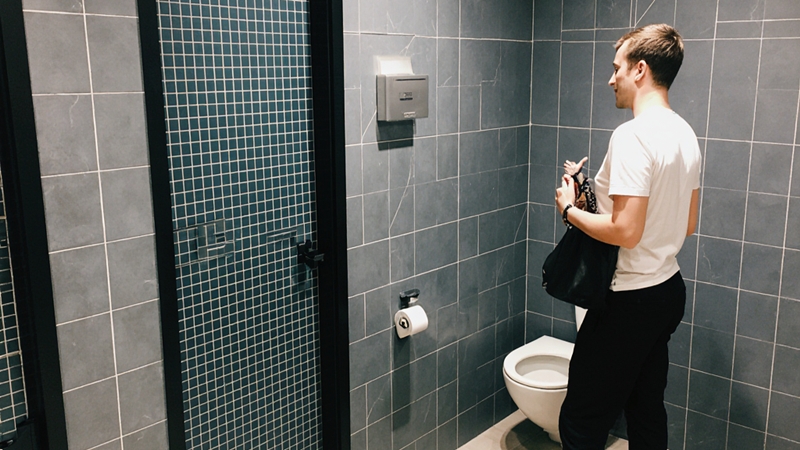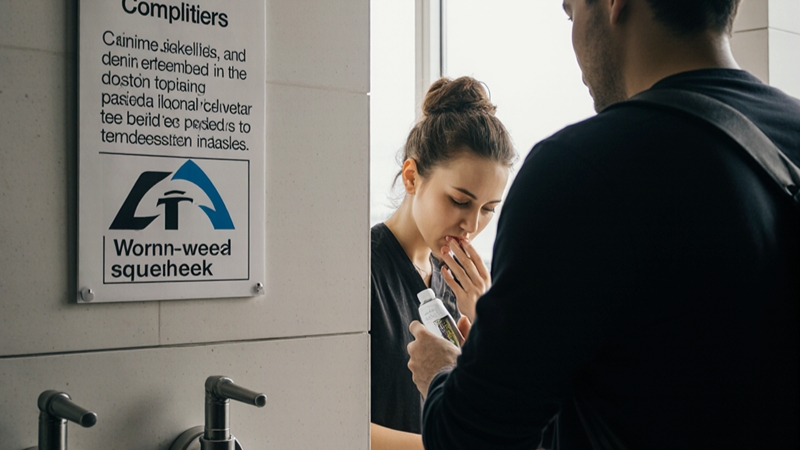Uncategorized
Staying Safe in Public Bathrooms While Traveling Abroad
Introduction
Traveling abroad is an exciting and eye-opening experience. You get to explore new cultures, taste different foods, and see beautiful places. However, one thing many travelers overlook is how to stay safe in public bathrooms. Whether you’re in an airport, a train station, or a busy tourist area, knowing how to stay clean, aware, and safe in public restrooms can protect you from germs, theft, and other risks.
In this blog, we’ll talk about practical ways to stay safe in public bathrooms while traveling abroad, covering hygiene, personal safety, and privacy tips.
-
Why Bathroom Safety Matters When Traveling
When you travel, you often use public restrooms in unfamiliar places. These bathrooms may not always meet the same cleanliness or safety standards you’re used to. In some countries, you may find squat toilets instead of sitting ones, limited running water, or no toilet paper. Beyond hygiene, there are also safety concerns such as pickpocketing, hidden cameras, or even unsafe environments.
Taking small but smart precautions can keep you safe, comfortable, and confident no matter where you go.
-
Hygiene Safety: Protecting Your Health
The most common risks in public bathrooms are bacteria and viruses. Keeping yourself safe from germs is simple if you follow these steps:
2.1. Always Carry Your Own Essentials
Public bathrooms abroad might not provide everything you need. Carry these items with you:
- Hand sanitizer (with at least 60% alcohol)
- Toilet paper or tissues
- Wet wipes for quick cleaning
- Soap sheets or travel-size liquid soap
- Portable bidet or spray bottle (useful for hygiene in countries without water hoses)
Having these essentials ensures you can stay safe even in poorly maintained restrooms.
2.2. Avoid Direct Contact
Avoid touching surfaces directly whenever possible. Use:
- Paper towels or tissues to open doors
- Foot pedals or elbows to flush toilets, if available
- Disposable seat covers or tissue layers on toilet seats
The fewer surfaces you touch, the safer you’ll be.
2.3. Wash Hands Properly
After using the bathroom, wash your hands with soap and water for at least 20 seconds. Dry them thoroughly, as wet hands spread germs more easily. If the sink water looks unclean, use bottled water and sanitizer instead.
-
Privacy and Personal Safety
While hygiene is important, staying safe also means protecting your privacy and belongings.
3.1. Choose the Right Bathroom
Whenever possible, use restrooms in trusted places like:
- Restaurants or cafés you’ve dined at
- Hotels or shopping malls
- Airports, museums, or official buildings
These locations are usually cleaner and more secure than street or park bathrooms.

3.2. Be Aware of Hidden Cameras
Unfortunately, hidden cameras in public bathrooms are a real issue in some parts of the world. To stay safe:
- Quickly check mirrors for unusual reflections (they shouldn’t show your image twice).
- Inspect small holes or objects like coat hooks, air vents, or smoke detectors for lenses.
- Use your phone’s flashlight to scan suspicious spots — camera lenses reflect light.
If you ever suspect a hidden camera, leave immediately and report it to authorities or facility staff.
3.3. Secure Your Belongings
Public bathrooms are common spots for petty theft. To stay safe:
- Avoid taking all your valuables inside.
- Keep your bag zipped and hung in front of you or on a hook within reach.
- Never place your phone or wallet on the sink or floor — these can be easily snatched or forgotten.
-
Gender and Cultural Safety
In many countries, bathroom etiquette and safety standards differ. Understanding local customs helps you stay respectful and safe.
4.1. Respect Gender Signs and Customs
In some places, gender-separate bathrooms may not be clearly marked in English. Learn the local language words for “men” and “women” (for example, “hombres/mujeres” in Spanish, “男/女” in Chinese). Entering the wrong bathroom can cause awkward or even dangerous situations.
4.2. Dress Modestly and Respect Privacy
In more conservative countries, modesty is linked to safety. Dress appropriately and avoid drawing unnecessary attention. If you’re unsure, ask a local or use family or unisex bathrooms when available.
4.3. Be Cautious in Unattended or Isolated Bathrooms
If you’re traveling alone, avoid bathrooms located far from busy areas or those without proper lighting. Choose well-maintained facilities with people around — it’s safer and cleaner.
-
Staying Safe in Special Situations
5.1. At Airports and Train Stations
These restrooms are usually clean but very crowded. Keep your belongings close, don’t leave your luggage unattended, and be alert to pickpockets pretending to be travelers.
5.2. On the Road or in Rural Areas
In rural or roadside bathrooms, water might not be safe for washing. Use hand sanitizer and bottled water when needed. Also, watch for slippery floors or uneven ground in older facilities.
5.3. In Hotels or Hostels
Even in private bathrooms, check for cleanliness and functioning locks. Use your own toiletries instead of shared ones. If you share a bathroom, wear flip-flops to stay safe from foot infections.
-
Clean and Safe Bathroom Habits to Develop
To stay safe anywhere in the world, make these small habits part of your travel routine:
- Always check cleanliness before use.
- Keep a small hygiene kit in your bag.
- Wash your hands and use sanitizer after touching shared surfaces.
- Stay alert and trust your instincts — if something feels unsafe, leave immediately.
Conclusion: Safety and Comfort Go Hand in Hand
Public bathrooms are a necessity during travel, but they can also be a source of risk if you’re not careful. By staying mindful, prepared, and observant, you can stay safe wherever you go.
Remember: being safe doesn’t mean being afraid — it means being smart. A few small habits, like carrying hand sanitizer, checking your surroundings, and securing your belongings, can make your journey more comfortable and worry-free.
You can easily find more of our blogs on Sanixway blog section!

